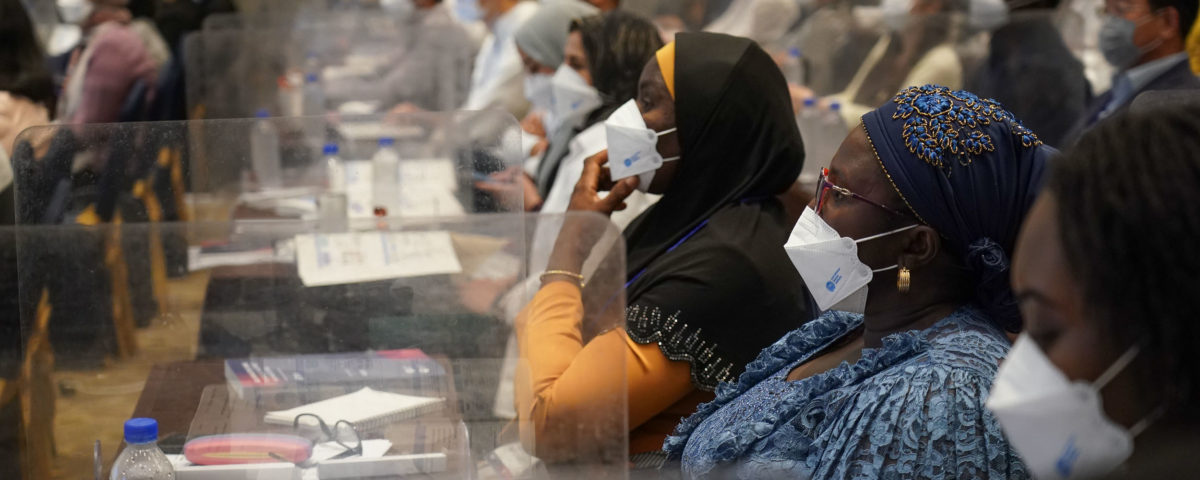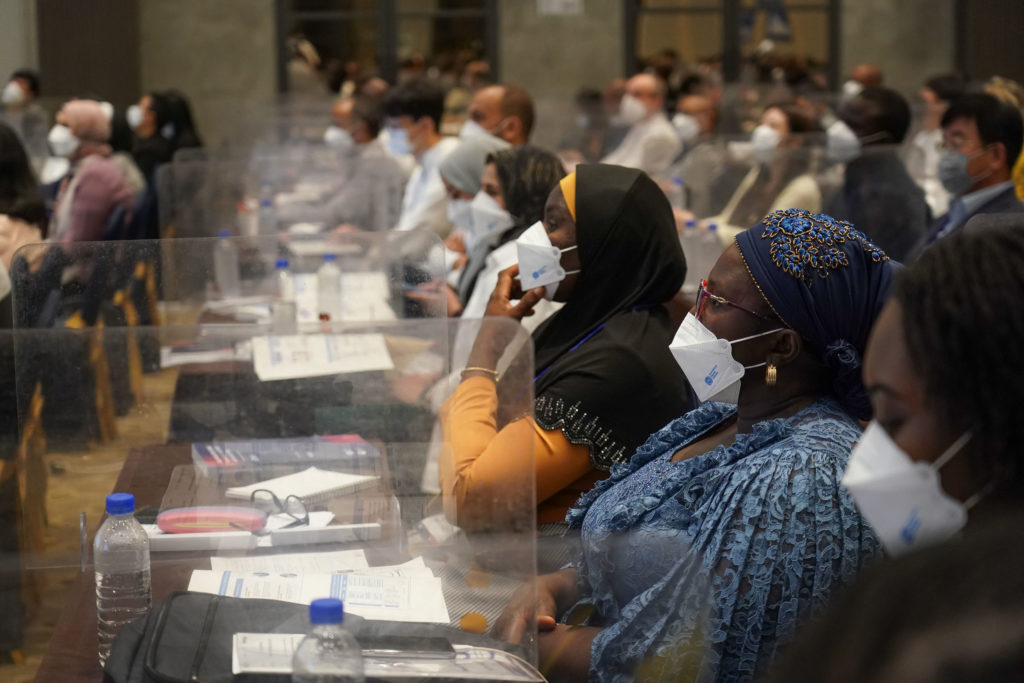Call for Applications: 2023 Introductory Course for Biologics Development and Manufacturing organized by the Global Training Hub for Biomanufacturing (GTH-B)
Call for Applications: 2023 Introductory Course for Biologics Development and Manufacturing organized by the Global Training Hub for Biomanufacturing (GTH-B)

Participants during the 2022 Introductory Course for Biologics Development and Manufacturing. Credit: IVI
Background
Low- and middle-income countries (LMICs) face significant inequity in terms of access to vaccines and other biologics and are making efforts to establish biological manufacturing in their regions. Establishing such manufacturing capacity, through bilateral technology transfer or through local R&D efforts is frequently hampered by the lack of a workforce trained in biomanufacturing.
To address this gap and to build biomanufacturing capacity in LMICs, the World Health Organization (WHO) and the Ministry of Health and Welfare of the Republic of Korea (MoHWK) are working towards establishing the first of its kind Global Training Hub for Biomanufacturing (GTH-B).
The hub is mandated to provide training in manufacturing of high-quality vaccines and biologics in an industrial setting to resolve inequality in access to vaccines and biologics worldwide by expanding manufacturing capacity in LMICs.
In 2022, two training courses, Introductory course for biologics development & manufacturing and Introductory course for global standards (GxP) were organized by the International Vaccine Institute (IVI) in Seoul, South Korea for about 330 participants from more than 30 LMICs.
For the second year, the Republic of Korea in agreement with WHO is organizing a new training operated by IVI focusing on introduction to biologics development & manufacturing in June 2023 for 120 trainees from LMICs.

Proposed dates for the upcoming Introductory Course for Biologics Development and Manufacturing
Monday, June 19, 2023 – Friday, June 30, 2023 (2 Weeks)
Scope
This course will be consisted of pre-online course for a week and in-person course for two weeks. The course will include didactic sessions on basic and essential theories including immunology, clinical development, vaccine development, regulatory affairs, epidemiology, and health economy. The course is targeting people employed by an entity formally registered in LMICs and currently involved in the production of bioproducts including vaccines, therapeutics, monoclonal antibodies, etc. A tentative course agenda is available here.
However, due to the restricted number of attendees (120), priorities will be given to 1) manufacturers identified as recipients of mRNA technology from the technology transfer initiative led by WHO and COVAX and 2) participants from LMICs.
Support awarded are not transferrable from one individual to another or from one session to another. Participants must be committed to return to their home institution after completion of the training. Participants will have to demonstrate in their application how the experience gained during the training program will be applied upon return to their home organization.
Expected impact
At the end of the training, all participants will be equipped with the knowledge and skills required to operate in a biomanufacturing facility based on the basic and essential theories. By investing in workforce development, the hub will support ongoing initiatives in local bioproduction and will strengthen knowledge sharing between manufacturers.
Eligibility
Applicants are required to have the following qualifications to be considered eligible for the course.
- An education background in the field of life science
- A position as technician, engineer, scientist, and manager with up to 6 years of experience in biomanufacturing, or related experience
- Employed by a company registered as a legal entity in LMIC conducting activities in the scope of biomanufacturing
- National or a citizen of, and resident in a LMIC
- Have at least an intermediate level of spoken and written English language
- Demonstrate in the application how the skills and competencies acquired during the training will be applied after the training in the institution the participant is coming from
- Demonstrate in the application the relevance to professional project
- Demonstrate in the application the expectations, knowledge, skills, and expectations from their own institution
Application procedure
The online application form is available at the following link: https://ivionlinecampus.ivi.int/
The following information must be provided:
- First and family name
- Date of birth, gender, and other personal information
- Copy of information page of passport
- Name, address, telephone number and e-mail address of institution where the applicant is employed
- Educational qualifications and level of English proficiency
- A description of the applicant’s current post
- A description of the applicant’s current work/ interests
- A description of competencies and skills the applicant would like to acquire during the training
- A description of how the applicant, if selected, plans to apply the acquired skills and knowledge after returning to home country/institution
- An endorsement from the Director of the applicant’s institution testifying the ability of the applicant to successfully undertake the training proposed and certifying the applicant’s current employment. The Director also must indicate how the proposed training will strengthen the institution’s capability, to develop bioproducts. (Endorsement letter sample is available at application website)
Deadline for submission of proposals
All applications must be submitted online at https://ivionlinecampus.ivi.int/ by February 17, 2023 at 18:00 (KST)
Selection process
The selection process includes the following steps:
- Eligible applications will be reviewed by the selection committee formed by members recommended from MoHW in South Korea and WHO.
- When the selection process is completed, the selected participant will be informed by e-mail, upon which following administrative arrangements will be made.
Financial provisions
Course is free of charge to participants. Accommodation and breakfast will be provided during the course days and over the weekends. Lunch and light dinner will be provided during the course days only and will not be included in weekends.
The trip cost to/from Seoul, South Korea will NOT be provided. Applicants must secure the traveling costs at their own expense.
Gender
MoHW in South Korea and WHO are committed to Equality, Diversity, and Inclusivity in science. Qualified applicants are encouraged to apply irrespective of gender identity, sexual orientation, ethnicity, religious, cultural, and social backgrounds, or (dis)ability status.
For further information
For questions related to this course, please contact gthb.coordinator@ivi.int
The receipt of the applications will be automatically acknowledged via return email from gthb.coordinator@ivi.int . Applicants who do not receive an acknowledgement within the specified time should contact gthb.coordinator@ivi.int
An acknowledgement of the application receipt does not imply that the application is complete and eligible for review.


